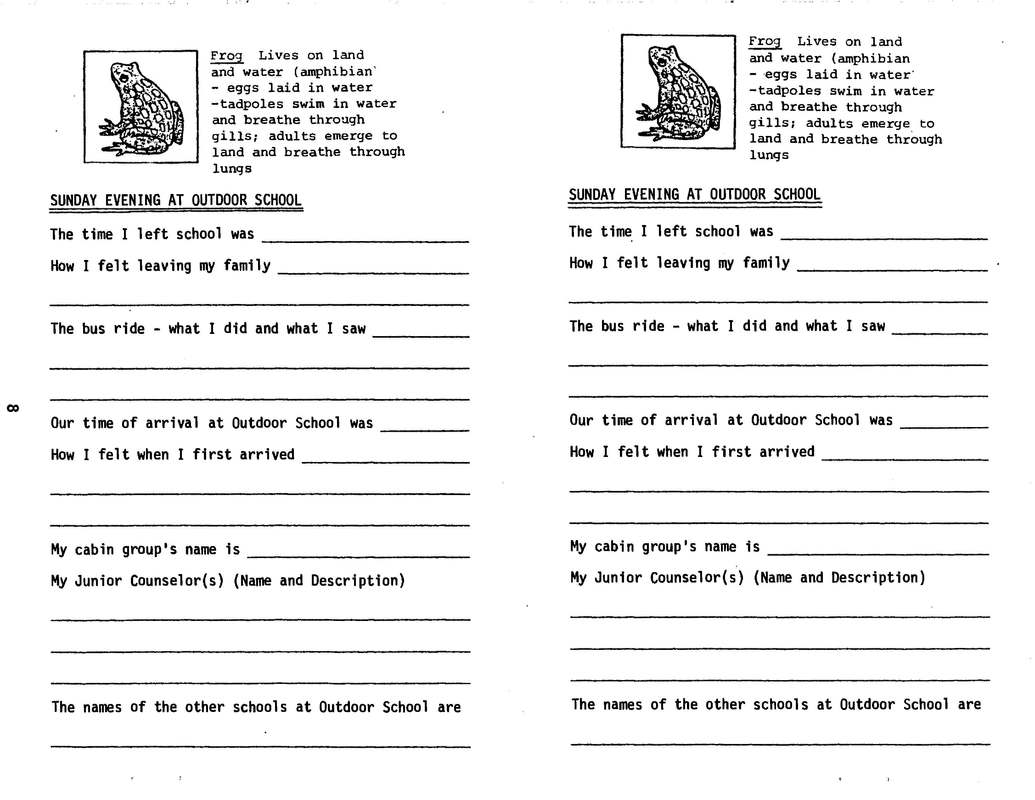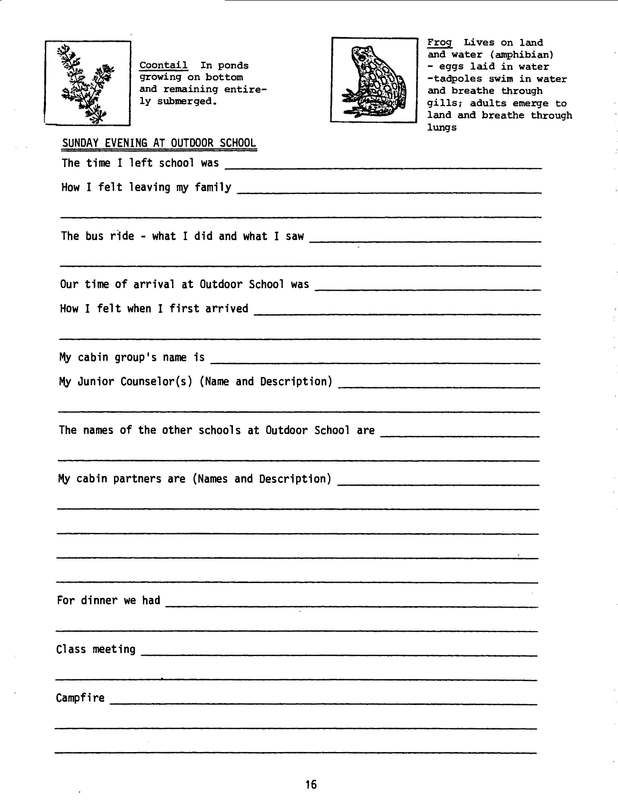Objectives: Students will be able to observe and describe their surroundings; and record their observations and descriptions in a written form and visual form.
Background: A naturalist is a person who studies nature, especially by direct observation of plants, animals, and their environments. Naturalists often spend a lot of time in the out-of-doors, and they often record their observations in some form—from sketches, drawings, paintings, and photos, to poetry in learning more about natural systems, interest in contributing to scientific research, love for the art of writing as literature, and simple satisfaction in being outside.
People benefit today from the insights and observations of people who have delighted in, and been fascinated by, the wonders of the natural environment. Henry David Thoreau, Walt Whitman, Enos Mills, John Muir, Edward Abbey, and Annie Dillard are among those who have captured their insights in words and offered them to others.
Most of the naturalists who put their observations in poetry and prose carry with them a small journal as they wander the woods, streams, lakes, oceans, deserts, and other natural environments. The major purpose of this activity is for students to make their own journals and to acquire experience in using a journal to record their observations.
Materials: Construction paper for journal covers, paper, (or use journal pages provided in this book}, staples and stapler, marking pens, crayons, pencils.
Procedure:
Suggested Activities:
Background: A naturalist is a person who studies nature, especially by direct observation of plants, animals, and their environments. Naturalists often spend a lot of time in the out-of-doors, and they often record their observations in some form—from sketches, drawings, paintings, and photos, to poetry in learning more about natural systems, interest in contributing to scientific research, love for the art of writing as literature, and simple satisfaction in being outside.
People benefit today from the insights and observations of people who have delighted in, and been fascinated by, the wonders of the natural environment. Henry David Thoreau, Walt Whitman, Enos Mills, John Muir, Edward Abbey, and Annie Dillard are among those who have captured their insights in words and offered them to others.
Most of the naturalists who put their observations in poetry and prose carry with them a small journal as they wander the woods, streams, lakes, oceans, deserts, and other natural environments. The major purpose of this activity is for students to make their own journals and to acquire experience in using a journal to record their observations.
Materials: Construction paper for journal covers, paper, (or use journal pages provided in this book}, staples and stapler, marking pens, crayons, pencils.
Procedure:
- Get out construction paper and paper for journal pages for the students to make their own journals. Simply put pages inside the construction paper cover and staple along the seams so the booklet stays together. Provide marking pens and crayons so the students can put their name, a title, and a drawing on the cover of their book. NOTE: Journal pages have been provided in two sizes, 8½ x 11 and 5½ x 8½. The smaller pages are the same size as the Field Study Notebook that your students will write in at Outdoor School.
- Blank pages are recommended so students may draw, sketch, paint, write poetry, etc. besides following the standard journal page.
- Give the students some time—about 15 minutes is fine to begin—to start getting accustomed to using their journal. Structured activities can be inserted at this point, or, each student can work quietly to do a drawing or poem. They could begin to write a few words of description, or a poem about their feelings. The important thing to stress is that the journal is theirs—for them to fill with whatever they choose. It is a special way to keep memories and ideas about things in the natural environment and their experience at Outdoor School.
Suggested Activities:
- Talk with the students about what they have seen, felt, and noticed. A "guided imagery" (where the students close their eyes and you ask them to visualize what you describe) can be useful at this point, with the students sitting quietly—now with eyes closed—while you ask them to imagine different things that will enhance their awareness of the out-of-doors. For example, "You are a tall tree standing in the forest. Feel your roots digging deep into the soil. Feel the water from a recent rainstorm seeping into the soil. Feel the earth around you. Feel that large rock tangled in your roots. Feel your branches swaying in the breeze, warmed by the sunlight." Students can write about some of the things they have seen, felt and noticed on resource during the day.
- Read an excerpt from the writings of some naturalists or similar books; A children's book for young and old students, The other Way to listen, by Byrd Baylor and Peter Parnall (Charles Scribners Sons, New York, 1978) is an excellent way to set a mood and encourage greater awareness of natural surroundings. It includes:
I used to know an old man who could walk by any corn field and hear the corn singing... "Were you surprised to hear it?" I always had to ask. He said, "Not a bit. It seemed like the most natural thing in the world."
Or, any excerpts from, The Wilderness World of John Muir, edited by Edwin Way Teale (Houghton Mifflin Company, Boston, 1954) are good. For example, the chapter, "Windstorm in the Forest," is Muir's accounting of climbing
a tall tree during a windstorm:
a tall tree during a windstorm:
It occurred to me that it would be a fine thing to climb one of the trees to obtain a wider outlook... Under the circumstances, the choice of a tree was a serious matter... Being accustomed to climb trees in making botanical studies, I experienced no difficulty in reaching the top of this one, and never before did I enjoy so noble an exhilaration of motion. The slender tops fairly flapped and swished in the passionate torrent, bending and swirling backward and forward, round and round, tracing indescribable combinations of vertical and horizontal curves, while I clung with muscles firm braced, like a bobolink on a reed.
Another book with excerpts from a variety of naturalists and authors is The Earth Speaks, by Steve Van Matre and Bill Weiler (Acclimatization Experiences Institute, Illinois, 1983).
Adapted from: PROJECT WILD (Secondary Activity Guide), Western Association of Fish and Wildlife Agencies and the Western Regional Environmental Education Council, 1983.
Download PDF of small or large journal pages below:
- Discuss the value of journals. In addition to recording impressions, feelings, and observations, a journal can become a log of important data to be referred to later. It can reflect changes in ecosystems, vegetative types, animal populations—as well as attitudes about things. It can hold images as well as words.
- For more ideas, see the "Poetry" section of this book.
Adapted from: PROJECT WILD (Secondary Activity Guide), Western Association of Fish and Wildlife Agencies and the Western Regional Environmental Education Council, 1983.
Download PDF of small or large journal pages below:



 RSS Feed
RSS Feed

